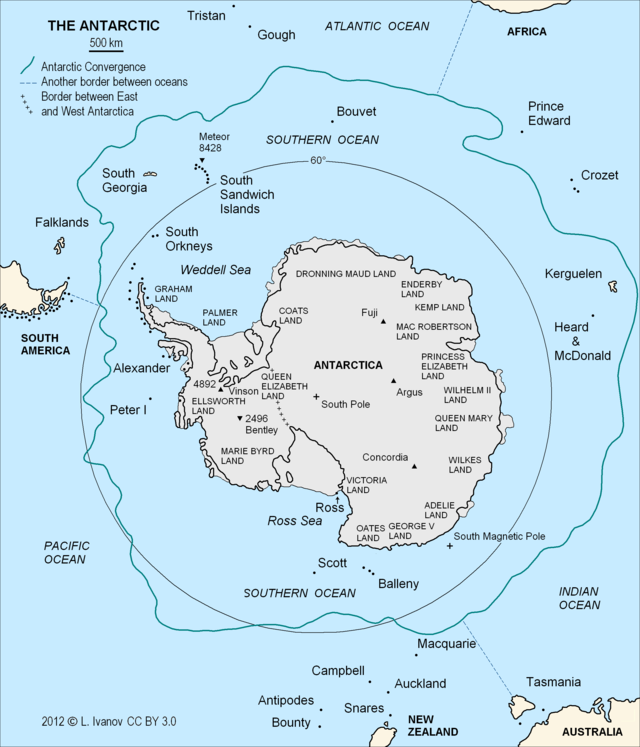Loading AI tools
Separation of two hydrological & climatic regions From Wikipedia, the free encyclopedia
The Antarctic Convergence or Antarctic Polar Front is a marine belt encircling Antarctica, varying in latitude seasonally, where cold, northward-flowing Antarctic waters meet the relatively warmer waters of the sub-Antarctic. Antarctic waters predominantly sink beneath the warmer subantarctic waters, while associated zones of mixing and upwelling create a zone very high in marine productivity, especially for Antarctic krill.

This line, like the arctic tree line, is a natural boundary rather than an artificial one, such as the borders of nations and time zones. It not only separates two hydrological regions, but also separates areas of distinctive marine life and climates.
The Arctic has no similar boundary because of the large bodies of land contiguous with the northern polar region.
The Antarctic Convergence was first crossed by Anthony de la Roché in 1675[1] and Edmond Halley in 1700,[2] and first described by the British Discovery Investigations and the German Meteor Expedition in 1925–1927.[3]
The Antarctic Convergence is a zone approximately 32 to 48 km (20 to 30 mi) wide, varying in latitude seasonally and in different longitudes, extending across the Atlantic, Pacific, and Indian oceans between the 48th and 61st parallels of south latitude. Although the northern boundary varies, for the purposes of the Convention on the Conservation of Antarctic Marine Living Resources 1980, it is defined as "50°S, 0°; 50°S, 30°E; 45°S, 30°E; 45°S, 80°E; 55°S, 80°E; 55°S, 150°E; 60°S, 150°E; 60°S, 50°W; 50°S, 50°W; 50°S, 0°."[4] Although this zone is a mobile one, it usually does not stray more than half a degree of latitude from its mean position. The precise location at any given place and time is made evident by the sudden drop in seawater temperature from north to south of, on average, 2.8 °C (5.0 °F) from 5.6 °C (42.1 °F) to below 2 °C (36 °F).
Seamless Wikipedia browsing. On steroids.
Every time you click a link to Wikipedia, Wiktionary or Wikiquote in your browser's search results, it will show the modern Wikiwand interface.
Wikiwand extension is a five stars, simple, with minimum permission required to keep your browsing private, safe and transparent.